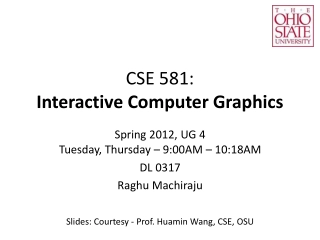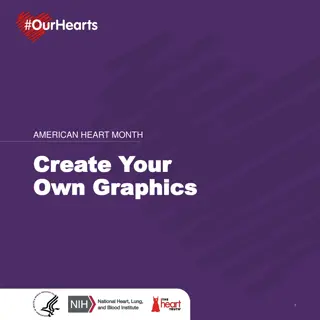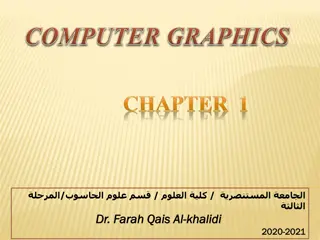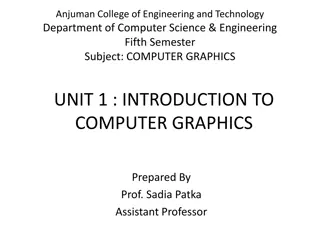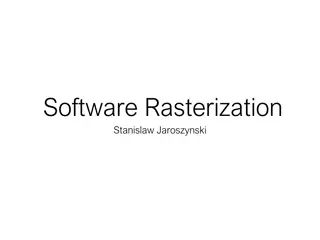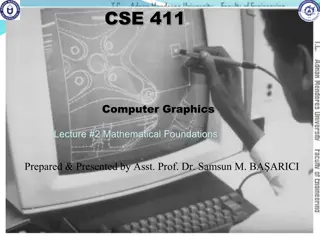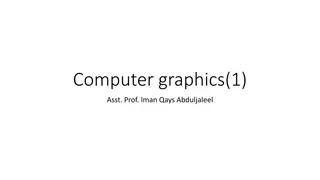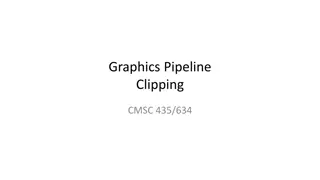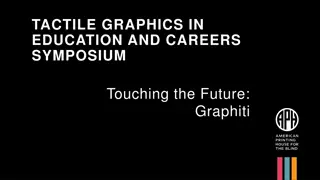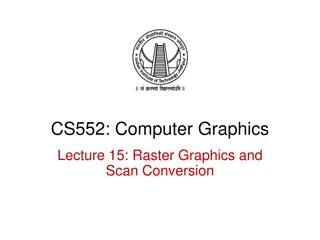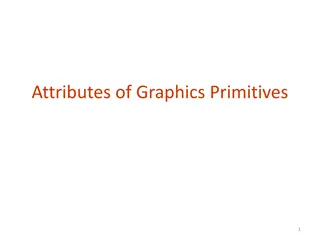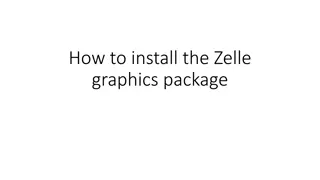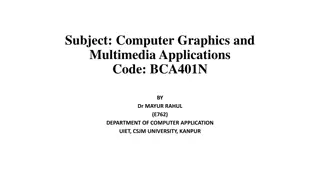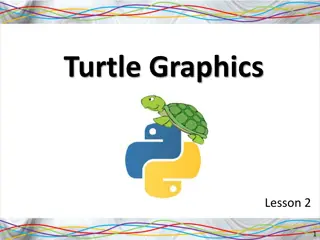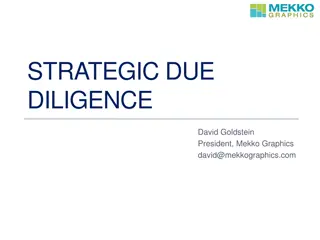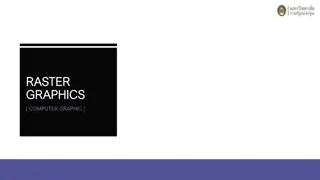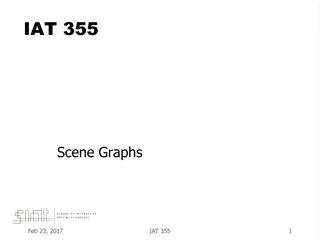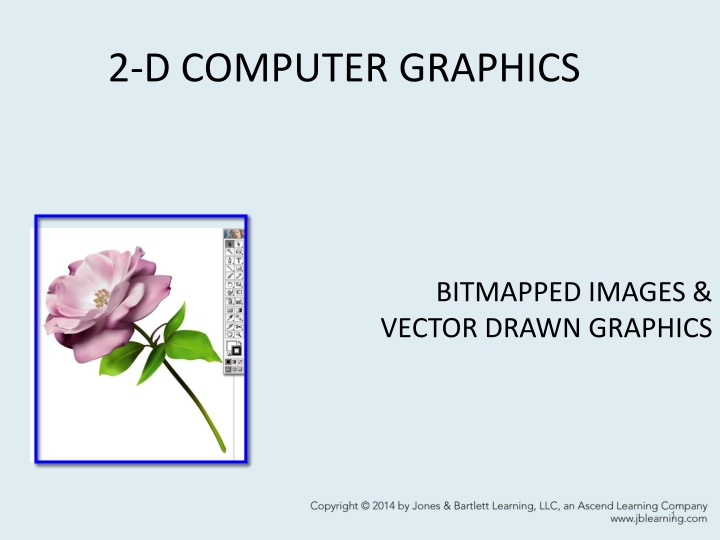
2-D Computer Graphics: Bitmapped Images & Vector Drawn Graphics
Delve into the world of 2-D computer graphics, exploring the concepts of bitmapped images and vector drawn graphics. Learn about the creation of images using pixels, color reproduction techniques, and the differences between traditional and digital graphic processes. Discover the categorizations of bitmapped images such as line art, grayscale, and color, along with their advantages and applications. Gain insights into the color reproduction methods on printed surfaces and computer monitors.
Download Presentation

Please find below an Image/Link to download the presentation.
The content on the website is provided AS IS for your information and personal use only. It may not be sold, licensed, or shared on other websites without obtaining consent from the author. If you encounter any issues during the download, it is possible that the publisher has removed the file from their server.
You are allowed to download the files provided on this website for personal or commercial use, subject to the condition that they are used lawfully. All files are the property of their respective owners.
The content on the website is provided AS IS for your information and personal use only. It may not be sold, licensed, or shared on other websites without obtaining consent from the author.
E N D
Presentation Transcript
2-D COMPUTER GRAPHICS BITMAPPED IMAGES & VECTOR DRAWN GRAPHICS 1
BITMAPPED GRAPHICS Bitmapped graphics Created as a pattern of discrete elements called pixels or "picture elements." Pixels Small squares. Assigned a binary code to define color. More bits = more color possibilities Note that bitmaps are always orientated horizontally and vertically. 2
TRADITIONAL GRAPHICS Color image reproduction. Use a series of four-color dots of transparent inks. CYMK Cyan, magenta, yellow, and a key color usually black. Small dots of color combinations can reproduce many different colors. 4
COLOR REPRODUCTION Color images on printed surface are formed using subtractive process. Light is reflected from the printed surface. Pigments that form an image absorb some of the colors. Remaining colors reach the eye to produce image. 5
Color images on computer monitor use additive process. Varying amounts of Red, Green, and Blue light are added together to create the color. Graphic artists convert from RGB(additive) color models to CMYK model if image is printed. 6
BITMAPPED IMAGES Categories of bitmapped images are: Line art Produced using two colors. Grayscale Produced using shades of gray. Color Produced with patterns of colored pixels. 7
BITMAPPED IMAGES Line art Two colors, usually black and white. Advantages Clear, crisp image. Small file size. Uses include: Charts Illustrations Diagrams. Line art is 1-bit color Line art flow chart diagram 8
BITMAPPED IMAGES Grayscale Generally 8-bit images of 256 shades of gray For images that require more detail than line art. Advantages Excellent representation of black and white photos Smaller files size than full color Lower printing costs than color. 9
BITMAPPED IMAGES Color Consists of a pattern of colored pixels Bit depth: the number of bits used to encode each pixel determines the amount of color possibilities. Photo-realistic color requires 24-bit color. Two methods to create color on a computer: Identify a table of possible colors for the computer (Color Lookup Table) Specify varying amounts of Red, Green, Blue. 10
MAKING COMPUTER COLOR 8-bit color presents a specific range of colors in a table. PCs and Macs use different tables. Web-safe table provides colors that display the same on all platforms. 24-bit color combines 8-bit values of red, green, or blue to create the result. 16.7 million color possibilities. 11
BITMAPPED IMAGE QUALITY Image quality depends on spatial and color resolution. Spatial resolution = density of pixels per inch. Color resolution = number of colors each pixel can display. Spatial resolution measurements. Monitor output is measured in ppi (pixels per inch). Print output is measured as dpi (dots per inch). 12
SPATIAL RESOLUTION Higher spatial resolution Captures more detail. Pixels are smaller and closely packed. Produces sharper, more accurate images. Lower spatial resolution Captures less detail. Pixels are larger. Images appear fuzzy. High spatial resolutions yield large file sizes but better image quality. 13
DEVICE-DEPENDENCE Dimensions of an image depend on the resolution of the output device. Monitors have low spatial resolution: 72 ppi (Mac) or 96 ppi (PC). Printers/phones/tablets have higher spatial resolutions: 300 dpi to 2400 dpi. Bitmapped images are device-dependent. 300 ppi image prints the original size on 300 dpi printer. Same image is greatly enlarged on a 72 ppi monitor. 14
COLOR RESOLUTION Bit-depth determines color resolution. Making the bit-depth choice: Simple color images do not require many colors. Low bit-depth yields small file size. Complex color images require millions of colors. High bit-depth yields better quality but larger files. Low color resolution may cause quantization and color banding. Quantization leads to breaks in shades of continuous tone images. 15
COLOR RESOLUTION Indexing A specific palette of colors is identified to optimize the appearance of lower color resolution image. Dithering Combining pixels of different colors to produce another color not available in the indexed palette. Improves image quality without increasing bit depth. 16
BITMAPPED FILE FORMATS Compression of bitmapped graphics are: Lossy Lossless. Common graphic file formats are: PICT BMP TIFF JPEG GIF PNG What form of compression do each of these formats use? 17
BMP vs GIF 18
GIF vs JPEG 19
JPEG vs GIF 20
PNG vs GIF 21
VECTOR-DRAWN GRAPHICS Vector: a line with length, curvature, and direction. Vector graphics: images created from mathematically defined shapes. Draw programs: software used to create vector graphics. Main advantages: Images can be enlarged without distortion Small file size. 23
How vector drawn images work A vector is a line that is described by the location of its two endpoints. Vector drawing makes use of Cartesian coordinates. Cartesian coordinates are numbers that describe a point in two or three dimensional space as the intersection of the X, Y, and Z axes. L1 [ <0,0,0>, <10,3,6> 24
DEVICE INDEPENDENCE Vector graphics can be used with different devices without altering the image dimension. Printers and monitors preserve the original dimension of the image. 25
ADVANTAGES BITMAPPED IMAGES VECTOR IMAGES Full-featured photo editing. Wide range of artistic effects. Precise editing. Smooth scaling and reshaping. Ease of editing objects in layers. Low file size. Device-independent. 26
DISADVANTAGES BITMAPPED IMAGES VECTOR IMAGES Large file sizes. Loss of precise shapes when scaled or rotated. Device-dependent. Inaccurate, incomplete representation of complex contone images. No photo-editing capability. Limited artistic control. 27
drawImage Advanced Example context.drawImage(img,sx,sy,swidth,sheight,x,y, width,height); Specifies the image, canvas, or video element to use Optional. The x coordinate where to start clipping img sx Optional. The y coordinate where to start clipping Optional. The width of the clipped image Optional. The height of the clipped image The x coordinate where to place the image on the canvas The y coordinate where to place the image on the canvas Optional. The width of the image to use (stretch or reduce the image) Optional. The height of the image to use (stretch or reduce the image) sy swidth sheight x y width height
How To Work with JSON in JavaScript https://www.digitalocean.com/community/tu torials/an-introduction-to-json https://www.digitalocean.com/community/tu torials/how-to-work-with-json-in-javascript 29

